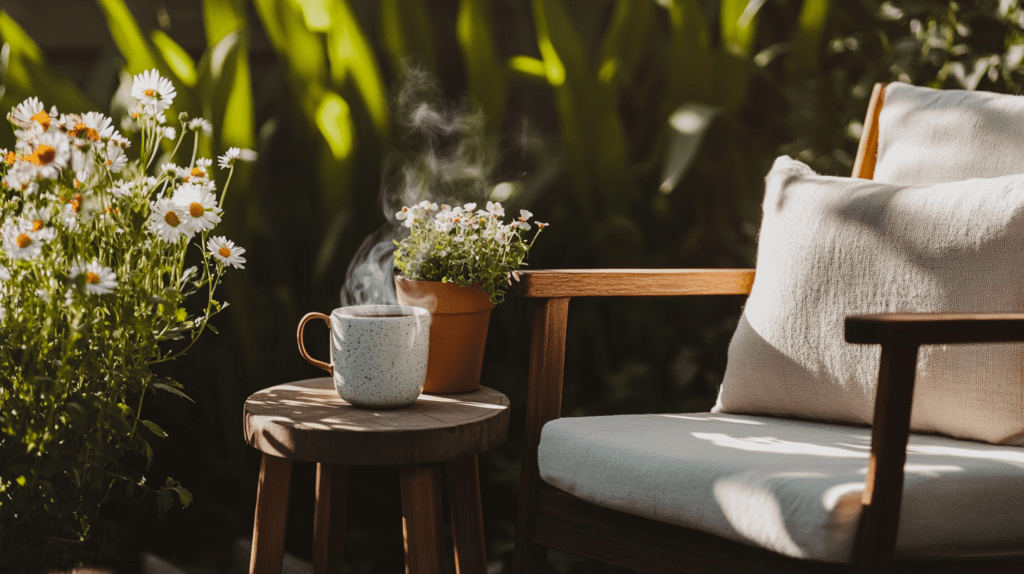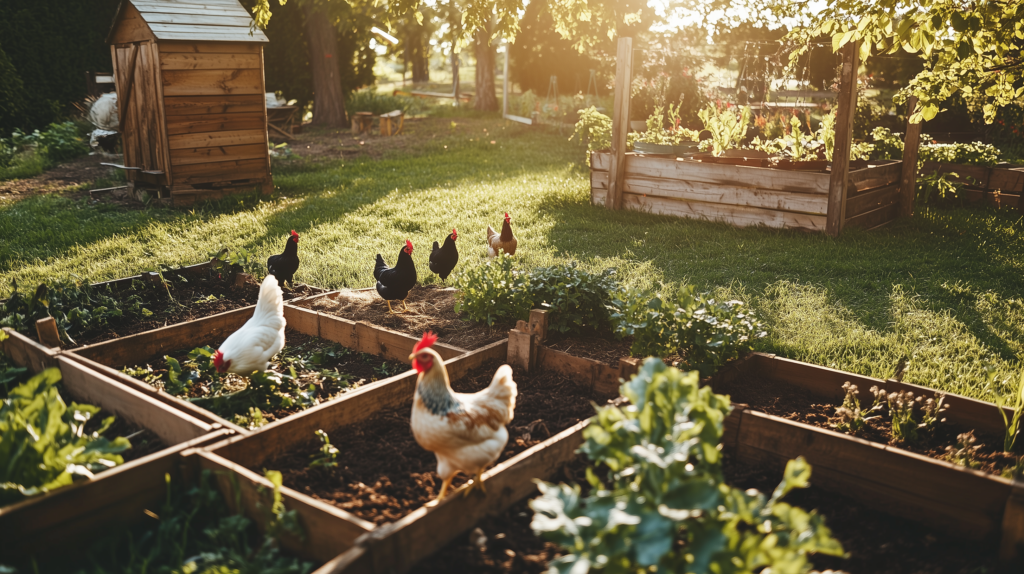This post may contain affiliate links, including those from Amazon Associates. If you make a purchase through these links, I may earn a commission at no additional cost to you. Learn more about our affiliate policy.
If you live in an apartment and crave a touch of nature, creating a wildflower balcony garden is a beautiful way to infuse your space with vibrant color and support pollinators like bees and butterflies.
When I first began my journey into urban homesteading, I was sure that apartment living would limit me, but discovering the magic of balcony gardening completely shifted my perspective. Trust me; even the smallest balcony can become a thriving sanctuary, buzzing with life and overflowing with flowers.
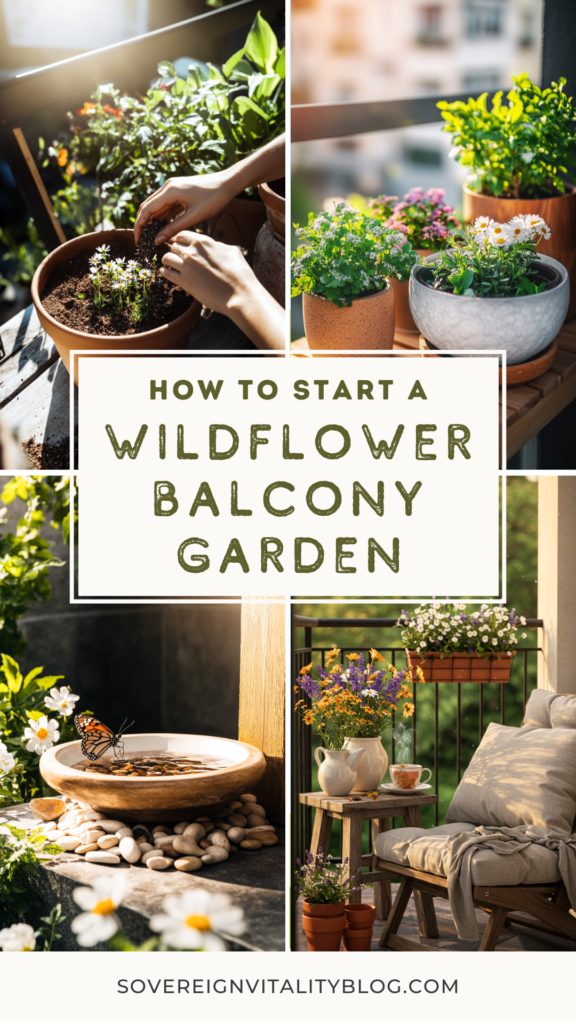
Today, I’ll walk you step-by-step through creating your own balcony wildflower garden, helping you cultivate an oasis of calm and joy right outside your door.
Benefits of a Wildflower Balcony Garden
Wildflower balcony gardens aren’t just gorgeous to look at, they offer incredible benefits to urban ecosystems and bring more life into your daily routine.
Attracts and Supports Pollinators
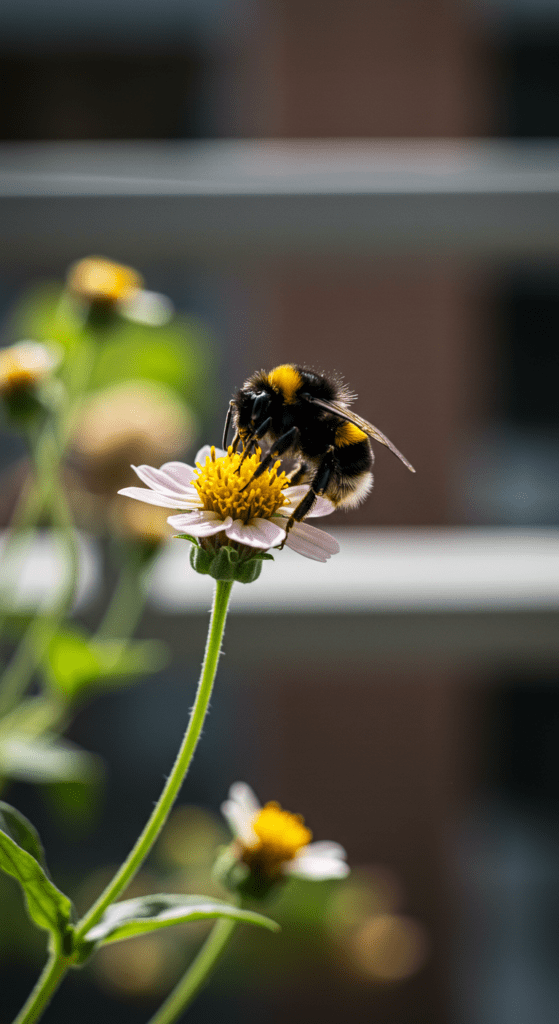
Creating a balcony garden rich in wildflowers is an excellent way to start a low-maintenance pollinator garden. Pollinators like bees, butterflies, hummingbirds, and even beneficial insects desperately need safe spaces amidst urban areas.
Your wildflower haven can be a lifeline, especially if you’re choosing organic, pesticide-free practices.
Creates Serenity and Mindfulness
There’s something incredibly peaceful about stepping onto a balcony surrounded by colorful blooms swaying gently in the breeze.
Incorporating mindfulness moments into your day becomes natural when you pause to appreciate the delicate petals, the gentle hum of bees, and the soft fragrances in the air. This act can become a daily nervous system reset routine that grounds into the goodness of nature.
Easy and Affordable
Wildflowers are hardy, require minimal care, and generally thrive with basic maintenance. They’re perfect for beginner gardeners or those balancing busy lifestyles in the city or suburbs.
Getting Started: Choosing the Right Containers

First things first, let’s talk about containers. The type of container you choose will significantly impact your balcony garden’s success.
- Material Matters: Opt for materials like ceramic, terracotta, wood, or recycled plastic. These materials provide good drainage and breathability which are critical factors for healthy roots.
- Size Considerations: Choose containers at least 12 inches deep. Wildflowers have deep root systems, so deeper pots help support robust, healthy plants.
- Recycle common household items into DIY containers! Here are some ideas for garden containers on a budget.
If you’re renting and worried about balcony limitations, check out my guide on How to Start a Renter-friendly Container Garden for some helpful tips.
Picking the Perfect Wildflower Seeds
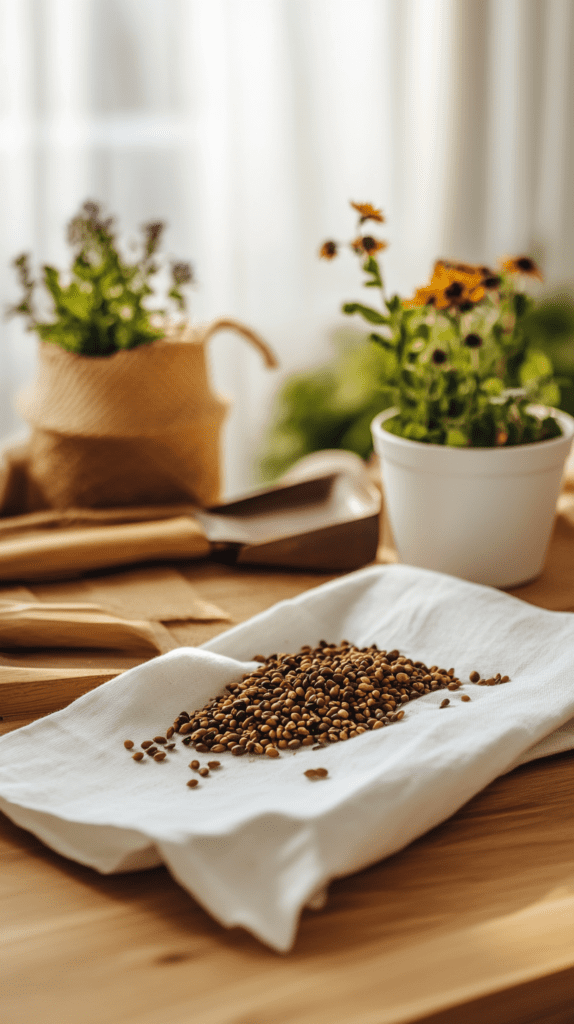
Selecting the right seeds can feel overwhelming, but simplicity is key. Look for seed blends specifically marked for pollinators and small spaces.
- Native Wildflowers: Aim for native species as they support local pollinators and naturally thrive in your climate. Find the best native wildflowers for your area by using this tool from World Wildlife.
- Seasonal Considerations: Choose a blend that blooms throughout the season to provide continuous beauty and pollinator support.
If you’re new to balcony gardening, learn 12 secrets of starting a balcony garden to get some invaluable advice before you get started.
Planting Your Wildflower Balcony Garden
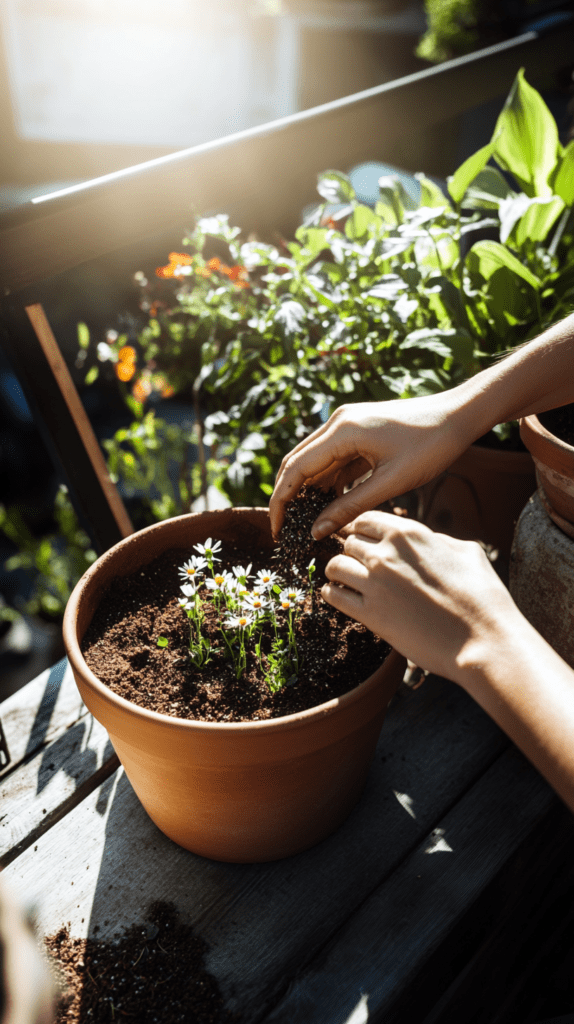
With seeds and containers ready, it’s time to plant. Follow these easy steps to ensure lush growth:
- Fill Containers Properly: Fill your chosen containers with quality, organic potting mix designed for containers that’s lightweight, nutrient-rich, and promotes good drainage.
- Sowing Seeds: Sprinkle seeds evenly over the soil surface. Cover lightly with additional soil, approximately ¼ inch deep.
- Water Gently: Water thoroughly yet gently. Keep soil consistently moist until germination occurs, typically within 1–3 weeks.
- Sunlight Needs: Most wildflowers require at least six hours of direct sunlight daily. Place your containers strategically to maximize sunlight exposure.
Caring for Your Balcony Garden
Once your garden is growing, regular maintenance ensures continuous blooms and healthy plants.
- Water Wisely: Avoid letting your plants dry out completely or become waterlogged. A general guideline is watering whenever the top inch of soil feels dry.
- Regular Feeding: Every four to six weeks, use a gentle, organic liquid fertilizer. This keeps wildflowers blooming vigorously without harsh chemicals.
- Deadheading and Trimming: Regularly remove spent blooms to encourage continuous flowering. Don’t be afraid to trim leggy growth—it helps maintain your garden’s vibrant look.
Creating a Pollinator Paradise
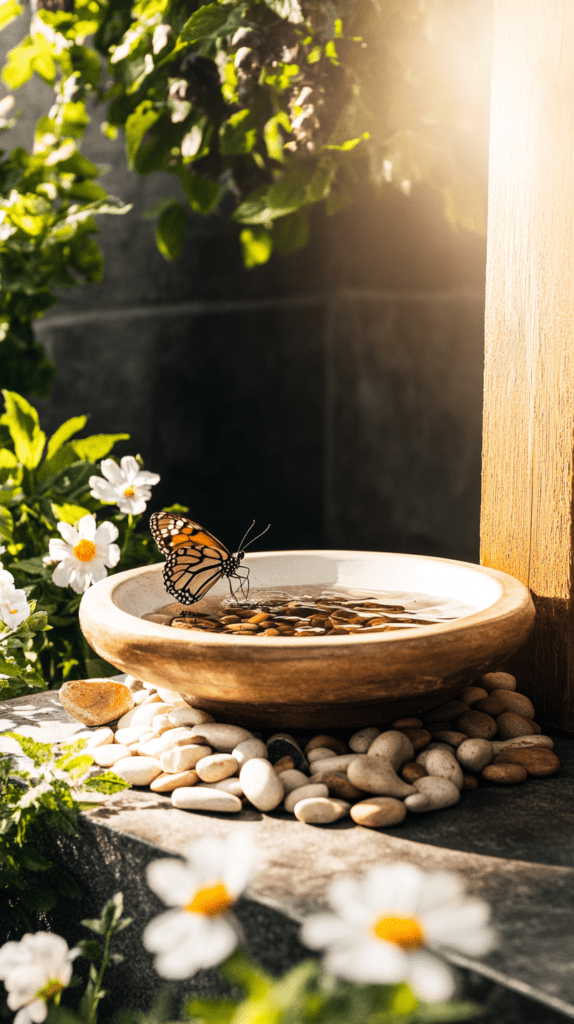
Remember, one of the most rewarding aspects of your wildflower balcony garden is creating an environment that welcomes and nourishes pollinators.
- Avoid Pesticides Completely: Always choose organic methods for pest control, like neem oil, manual removal, or insecticidal soap. Your garden should be a safe haven.
- Water Sources: Provide shallow water dishes filled with pebbles, giving pollinators a safe landing to hydrate.
For more detailed guidance, visit my comprehensive guide on How to Start a Pollinator Garden, filled with additional tips to make your balcony garden irresistible to pollinators.
Adding Extra Charm
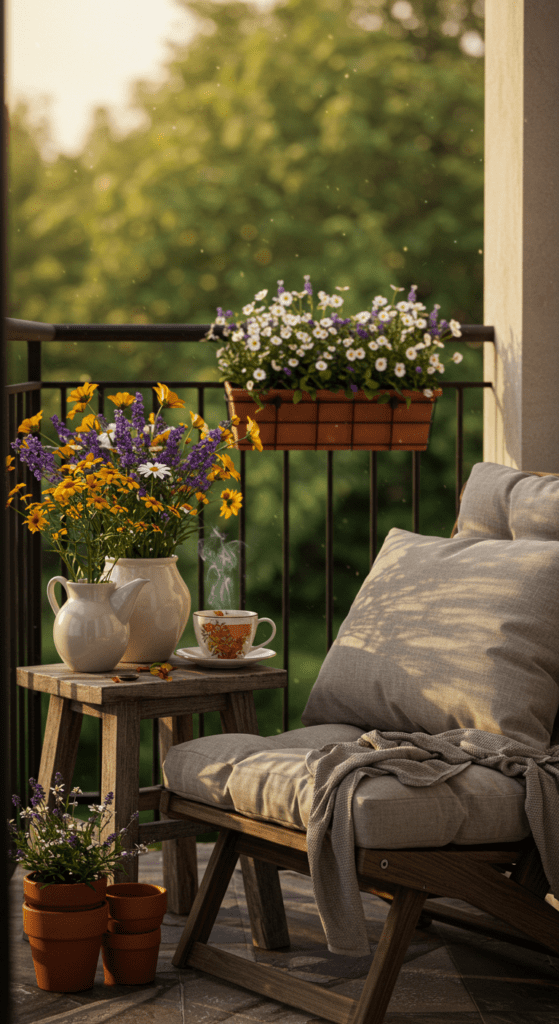
To make your balcony garden truly special, add charming elements that elevate your garden’s appeal.
- Herbal Companions: Add containers of herbs like lavender, mint, or rosemary. Herbs add fragrance, culinary uses, and additional support for pollinators.
- Vertical Gardening: Use hanging baskets, wall-mounted planters, or vertical shelving units to maximize your growing space. Vertical gardening is both functional and visually appealing, perfect for urban settings.
- Seating and Decor: Even a tiny stool or a decorative cushion invites you to spend mindful moments amidst your flowers.
Troubleshooting Common Issues
No garden is completely without its hiccups. Here are some common issues and simple solutions:
- Wilting and Stress: Ensure adequate watering and sunlight. Check drainage and move containers as needed.
- Leggy Plants: Increase sunlight exposure or prune strategically to encourage bushier growth.
- Pest Control: Regularly inspect for pests and use gentle methods to maintain a healthy garden ecosystem.
Embracing Your Urban Garden Sanctuary
As your wildflower balcony garden begins to flourish, you’ll experience firsthand the vitality and serenity it brings to your urban apartment. Creating a miniature oasis doesn’t require expansive acreage, it thrives beautifully within the smallest of urban spaces.
Your balcony garden isn’t just about growing flowers; it’s about cultivating a nurturing space that enriches your well-being, connects you with nature, and uplifts your daily life.
Gardening, even on a small scale, reminds us that true happiness often springs from simple pleasures: a flower in bloom, the gentle buzz of pollinators, and the satisfaction of nurturing life.
I encourage you to start today. Your balcony and your heart will thank you.

